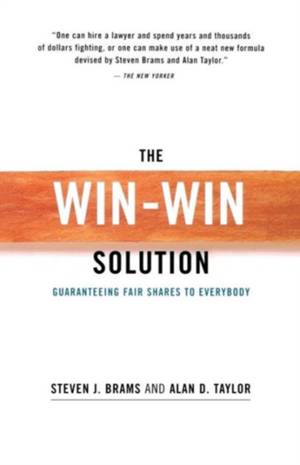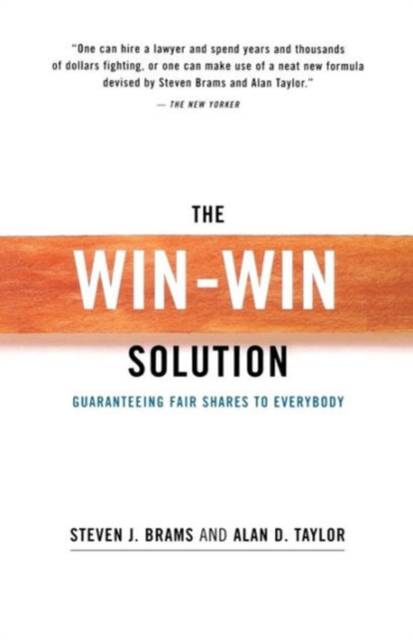
Bedankt voor het vertrouwen het afgelopen jaar! Om jou te bedanken bieden we GRATIS verzending (in België) aan op alles gedurende de hele maand januari.
- Afhalen na 1 uur in een winkel met voorraad
- In januari gratis thuislevering in België
- Ruim aanbod met 7 miljoen producten
Bedankt voor het vertrouwen het afgelopen jaar! Om jou te bedanken bieden we GRATIS verzending (in België) aan op alles gedurende de hele maand januari.
- Afhalen na 1 uur in een winkel met voorraad
- In januari gratis thuislevering in België
- Ruim aanbod met 7 miljoen producten
Zoeken
The Win-Win Solution
Guaranteeing Fair Shares to Everybody
Steven J Brams, Alan D Taylor
Paperback | Engels
€ 29,95
+ 59 punten
Omschrijving
Since the publication of Roger Fisher and William Ury's highly influential book, Getting to Yes, it has been widely recognized that there is a middle ground between winning and losing in negotiation. Yet, while Getting to Yes was long on motivation, it was short on technique. What you really want to know is on which issues you will win, on which you will lose, and on which you will have to compromise. To this question, Steven J. Brams and Alan D. Taylor bring a patented procedure that not only is fair but also actually guarantees that both parties walk away with as much of the "win-win" potential as possible. "One can hire a lawyer and spend years and thousands of dollars fighting [in a divorce], or one can make use of a neat new formula devised by Steven Brams and Alan Taylor."--The New Yorker
Specificaties
Betrokkenen
- Auteur(s):
- Uitgeverij:
Inhoud
- Aantal bladzijden:
- 192
- Taal:
- Engels
Eigenschappen
- Productcode (EAN):
- 9780393320817
- Verschijningsdatum:
- 1/10/2000
- Uitvoering:
- Paperback
- Formaat:
- Trade paperback (VS)
- Afmetingen:
- 141 mm x 211 mm
- Gewicht:
- 176 g

Alleen bij Standaard Boekhandel
+ 59 punten op je klantenkaart van Standaard Boekhandel
Beoordelingen
We publiceren alleen reviews die voldoen aan de voorwaarden voor reviews. Bekijk onze voorwaarden voor reviews.









